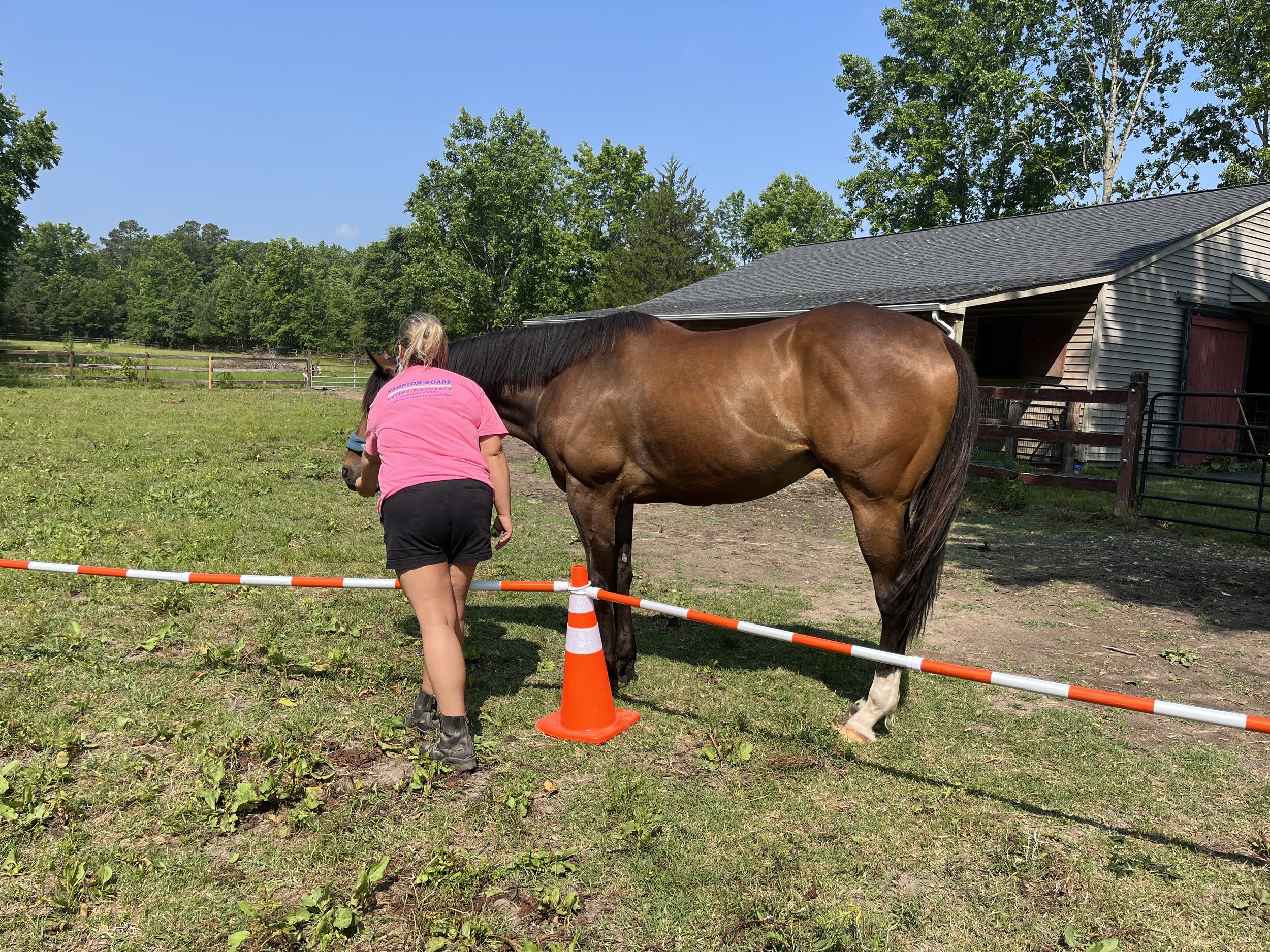More Interesting Than Grass
The past year has been… a learning process.
I knew it was going to be tough changing my way of training and thinking, but this year has challenged and shaped and molded me in ways I wasn’t expecting.
To back track - I made a commitment to myself and my horses exactly one year ago that I would no longer approach training with fear based methods. I would do my best to encourage the “play and seeking” states of being as opposed to the “fear” state. I wanted to make sure my horse and the horses I work with find joy in movement.
Well… easier said than done.
I would discover new techniques and make a lot progress, albeit some of the progress felt minutiae. And then I would grow a little discouraged, resort back to old pressure based methods, feel like crap for not entirely listening to my horse’s wishes, pout for a day, and then I would get back on track. Talk about an emotional rollercoaster - ha!
But now, at this place, nearly a year later, I can finally say I am enjoying myself now more than ever!
Have I ridden far less than I ever used to? Yes! But the quality of the horse’s work has improved dramatically and I am eagerly awaiting the day they are fairly prepared to carry me on their backs.
As of late, my riding has become more of a diagnostic tool in assessing how far correct biomechanics have come, how developed and prepared the muscles are or are not, and how educated the contact is.
All of these pieces are integral parts of correct ridden work, and so it just makes sense to take the time to develop them on the ground prior to riding.
With all of that being said, I am finally beginning to transition the positive reinforcement based groundwork under saddle. I am finding that when the horse is adequately prepared, they are very willing to do what it is I am asking.
For me personally, I don’t want to utilize targets while under saddle. I prefer to give a tactile cue and teach the desired response.
A couple of key takeaways I’ve gathered from the groundwork:
Give the horse time to process. Once you verbalize or sign the cue, sometimes it takes horses as long as 45 seconds to “run the numbers,” so to speak, and then to perform the desired behavior.
Repeat the cue without escalating. Escalating takes us back to the fear based state of being, and not much growth can happen there.
Utilize a high rate of reinforcement when you have to. Your horse will not need this forever. You can build duration over time as long as you continue to vary the timing of your rewards.
If a horse doesn’t want to go forward, look for pain, and then look for pain some more. We’ve recently radiographed a couple of horses who have a tendency to be energy conservationists, and it was revealed that their sole depth is inadequate. Hoof discomfort causes tight shoulders. Tight shoulders negatively affect the lift of the thoracic sling. A deflated thoracic sling blocks the horse’s back and therefore the transfer of energy from the horses hind up and over the back and back through the body. Look for pain.
It is important to remind everyone who is along for this journey that we are trying to bring play back in to something that has been forceful for many years, no matter how much of a positive spin we want to put on it. A boarder of ours shared with me today that Anna Blake always says, “We have to be more interesting than grass!” And I just love that.
I’ve also recently made a lot of headway with Rue’s shoulders, and so I’m excited to share that in another post.
Happy riding - err, groundwork and riding! 🥂

